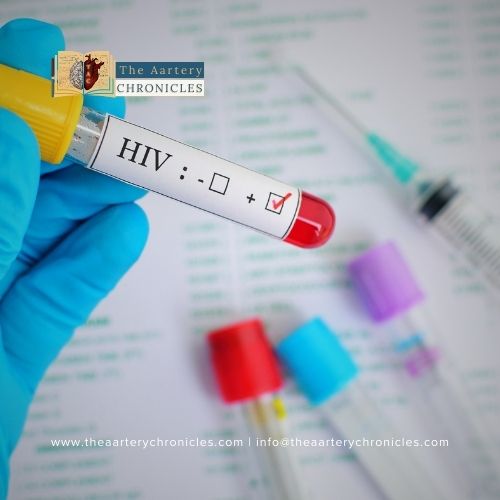

All About Seasonal Depression: Causes, Symptoms, & Management
Introduction
A shift in mood and energy levels is a common sign that accompanies seasonal changes. While these changes are typically mild, some individuals develop a condition known as seasonal affective disorder (SAD), commonly referred to as seasonal depression. The American Psychiatric Association recognizes SAD as a subtype of major depressive disorder that follows a seasonal pattern and occurs most commonly during fall and winter months. It can have a significant impact on daily life but is manageable with proper awareness and treatment. In this article, we will explore the science of seasonal depression, its signs and symptoms, and various treatment options.
What Is Seasonal Affective Disorder (SAD)?
Seasonal affective disorder is a subtype of major depressive disorder (MDD) characterized by depressive episodes that coincide with seasonal changes. Although it can occur in the summer, it is most prevalent in the colder months when days are shorter and exposure to sunlight decreases.
People typically begin to experience symptoms of winter-onset seasonal depression in late fall, which persist through the winter and subside with the arrival of spring. People might also encounter a less severe version of SAD, often referred to as the “winter blues.” Feeling a bit down during colder months is common, as reduced daylight often leads to spending more time indoors.
That said, full SAD is far more intense than the winter blues. It is a form of depression that significantly impacts thoughts, emotions, and the ability to carry out daily life activities. Thankfully, with the right treatment and support, managing and overcoming this difficult period is achievable.
Can People Experience Seasonal Affective Disorder (SAD) During the Summer?
Summer depression is a rare form of seasonal affective disorder that occurs during the summer months. This condition usually begins in late spring or early summer and fades by fall. While far less common than winter-onset SAD, summer depression can still have a significant impact on daily life.
Causes of Seasonal Depression
A multitude of factors contribute to the development of seasonal depression, which include:
Reduced Sunlight Exposure
Limited exposure to sunlight during fall and winter can disrupt the body’s internal biological clock, known as the circadian rhythm. This disruption of circadian rhythm impacts sleep, mood, and hormone production in the body.
Changes in Melatonin Levels
Decreased sunlight and longer nights during winter can lead to increased melatonin production, causing drowsiness and low energy levels.
Serotonin Imbalance
Sunlight helps regulate serotonin, a neurotransmitter that affects mood and contributes to feelings of happiness. Reduced sunlight exposure leads to lower serotonin levels, which triggers feelings of depression.
Vitamin D Deficiency
Sunlight is a key source of vitamin D, which plays a vital role in serotonin regulation. Low vitamin D levels during winter months may contribute to SAD symptoms.
Negative thought
People with SAD often experience stress, anxiety, and a sense of dread during the winter months. Researchers are still uncertain whether these negative thoughts are a contributing factor to seasonal depression or a consequence of it.
Symptoms of Seasonal Depression
Individuals with SAD experience symptoms similar to other forms of depression but occur seasonally. These include:
- Persistent sadness or low mood
- Carbohydrate cravings
- Overeating and weight gain
- Fatigue and low energy
- Difficulty concentrating
- Oversleeping (hypersomnia) or changes in sleep pattern
- Feelings of hopelessness or worthlessness
- Social withdrawal or isolation
- Agitation or irritation
- Suicidal thoughts
Seasonal depression can also trigger suicidal thoughts in more severe cases. If this occurs, immediate professional help is essential.
Spring and Summer SAD
Symptoms associated with summer-onset seasonal affective disorder, often referred to as summer depression, can include:
- Difficulty sleeping (insomnia)
- Loss of appetite
- Unintended weight loss
- Restlessness or heightened anxiety
- Increased irritability
Risk Factors for Seasonal Affective Disorder (SAD)
Factors that could elevate the risk of developing seasonal affective disorder include:
- Age and Gender: Individuals between the ages of 18 and 30, as well as those assigned female at birth, are more susceptible to SAD than others.
- Existing Mood Disorders: Those with other mood disorders, such as major depressive disorders or bipolar disorder, are at higher risk.
- Family History: A family history of SAD, other forms of depression, or mental health conditions like schizophrenia can increase susceptibility.
- Geographic Location: People who live far north or south of the equator are at greater risk, as these regions experience less sunlight during the winter months.
- Cloudy Regions: Living in areas with frequent cloudy or overcast weather can also reduce sunlight exposure, raising the risk of SAD.
Coping Strategies and Treatment Options for Seasonal Depression
Fortunately, seasonal depression is treatable, and various strategies can help manage symptoms effectively.
1. Light Therapy (Phototherapy)
Light therapy is one of the most effective treatments for winter onset seasonal affective disorder. It involves using bright light exposure that simulates natural sunlight. Light boxes are often used for about 30-45 minutes early in the morning to help regulate mood and circadian rhythm. However, individuals with existing eye conditions or those taking medications that heighten sunlight sensitivity are advised to consider alternative approaches.
2. Cognitive Behavioral Therapy (CBT)
Cognitive behavioral therapy, also known as talk therapy is a form of psychotherapy that helps individuals identify negative thought patterns and develop coping strategies.
3. Antidepressants
Antidepressants, either alone or in combination with CBT, have shown promising results in the treatment of SAD. Antidepressants modify the brain’s activity by influencing the production or use of chemicals that regulate mood and stress.
4. Vitamin D Supplements
In cases where vitamin D is a factor, supplements help improve the symptoms of winter-onset SAD.
5. Natural Sunlight Exposure
Spending time outdoors during daylight hours, even on cloudy days, can improve SAD symptoms. A way to maximize sunlight exposure is opening curtains and sitting near the windows.
How can seasonal affective disorder be prevented?
Preventing Seasonal Affective Disorder (SAD) may not always be possible, but certain strategies can help reduce its impact or lower the risk of developing symptoms. Maintaining a healthy lifestyle, including a balanced diet, regular exercise, and adequate sleep, supports overall well-being and resilience against SAD. Stress management techniques such as mindfulness, meditation, or yoga can also help reduce emotional strain. Establishing a consistent daily routine, especially for sleep and wake times, can stabilize the body’s internal clock. Additionally, ensuring adequate vitamin D levels through diet or supplements is beneficial, as limited sunlight during winter months can lead to deficiencies. If early symptoms of SAD appear, seeking advice from a healthcare provider can enable timely intervention and treatment.
When to seek help?
It’s normal to feel a little down during darker months, but if symptoms persist and interfere with daily life, it’s important to seek professional help. A healthcare provider can assess symptoms, provide a diagnosis, and recommend appropriate treatment options.
Conclusion
Seasonal depression can be challenging, but with awareness, treatment, and self-care strategies, it is manageable. By understanding the causes and symptoms of SAD, individuals can take proactive steps to protect their mental health during seasonal changes. If you or someone you know is struggling, remember that help is available, and brighter days are on the horizon.









